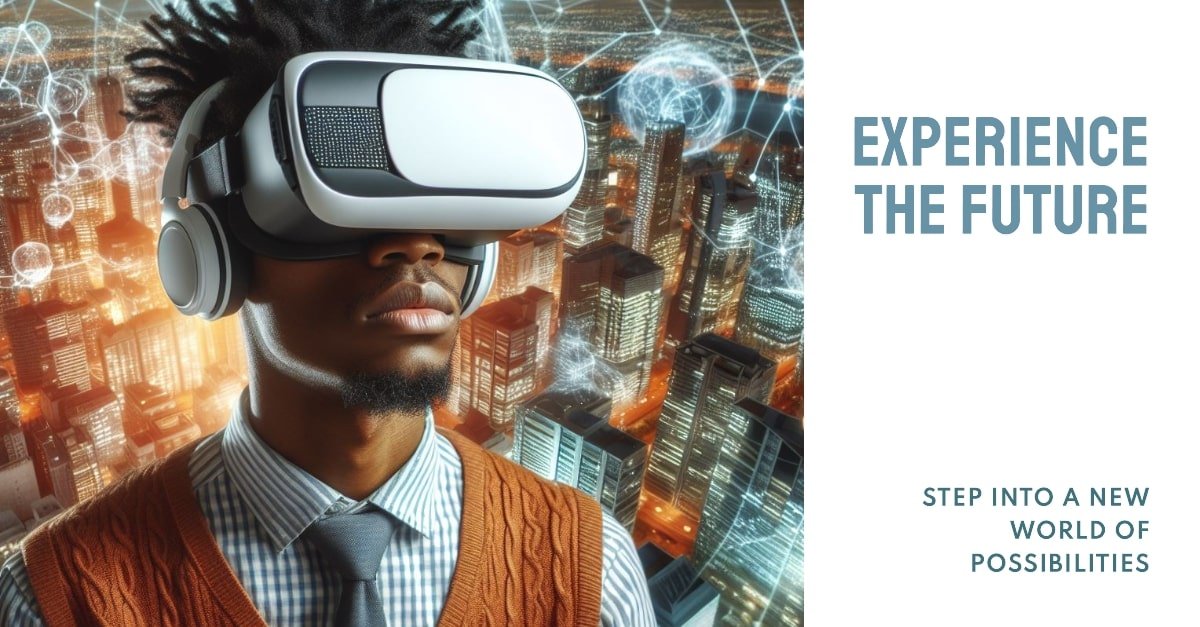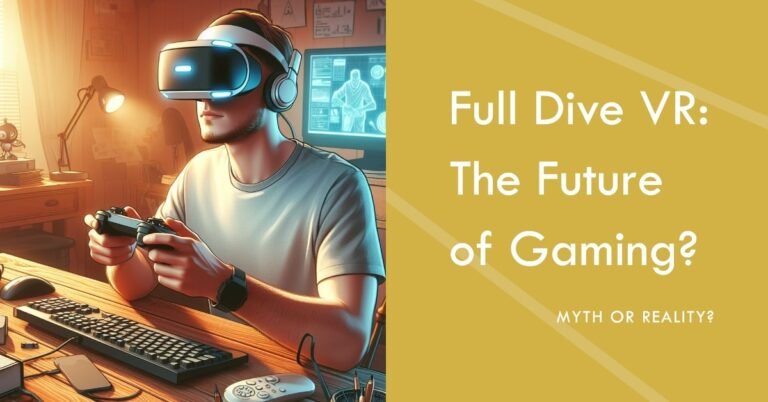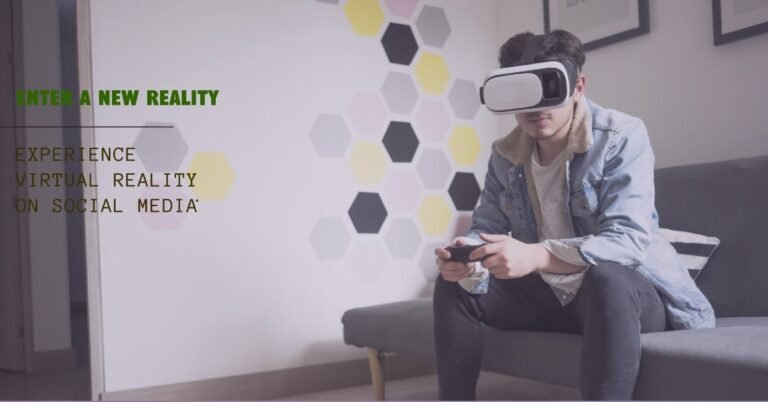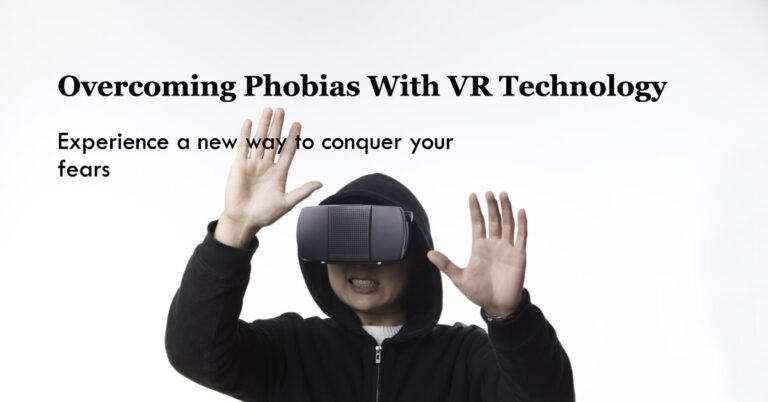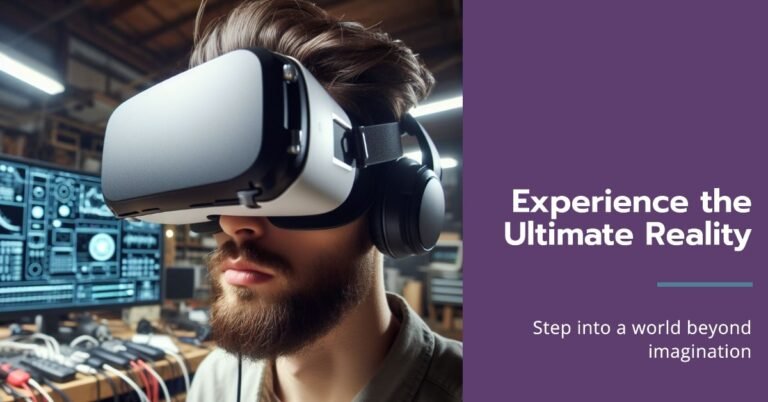How does the VR experience work?
How does the VR experience work? Have you ever wished you could step inside a video game, explore a faraway planet, or travel back in time? I know I have. That’s the magic of virtual reality (VR). Today at ARVRRealm.com, we’re going under the hood of VR to explore how this cutting-edge technology hijacks your senses and takes you on incredible journeys.
In this guide, I’ll explain how the VR experience works and share my own experiences, giving you everything you need to dive into this exciting world.
Understanding the Mechanics of Virtual Reality
Let’s get down to the nuts and bolts of how the VR experience works. In simple terms, VR is an immersive technology that creates the illusion of being physically present in a computer-generated environment. This magic happens thanks to a few key components:
- VR Headset: The heart of the VR experience, the headset houses the displays and lenses that bring the virtual world to life.
- High-resolution Screens: Think of these as tiny windows into an artificial world. VR headsets use high-resolution screens to project a separate image for each eye, creating the perception of depth and 3D space.
- Powerful Computer: Behind every VR experience is a powerful computer, responsible for generating these immersive, realistic graphics in real-time.
- Tracking Systems: These sophisticated systems track your head and body movements, allowing you to explore virtual spaces and interact with elements within them.
- Haptic Feedback: Some advanced VR systems use haptic feedback (touch-based sensations) to further convince your brain that the virtual objects you’re interacting with are real.
How does the VR experience work?
Simply put, VR tricks your brain. It works by feeding your eyes stereoscopic images (slightly different images for each eye), creating the illusion of depth. Meanwhile, tracking systems respond to your movements in real-time, adjusting the virtual world around you. This seamless interaction between your body and the virtual world fools your brain into thinking you’re in a whole new place, even though you haven’t physically moved.
Tricking Your Senses
VR creators skillfully manipulate your senses to make the experience even more believable. Let’s see how the different elements work together:
- Sight: Crisp visuals and the illusion of depth are vital for immersion. The images presented to your eyes through the VR lenses dynamically change as you move your head, just as they would in the real world.
- Sound: VR headsets often feature built-in headphones or allow you to plug in your own. Spatial audio makes the experience even more convincing, with sounds seemingly coming from specific directions within the virtual environment.
- Touch (Sometimes): VR experiences can sometimes incorporate haptic feedback elements like vibrating controllers or suits. This further convinces your brain you’re touching or interacting with the virtual world.
What do I need to experience VR?
To experience VR, Here’s a breakdown of what you’ll need to get started in VR, along with things to consider:
The Essentials
- A VR Headset: This is the heart of the experience. Here’s where your choices really matter:
- PC-Powered VR: (Examples: Valve Index, HTC Vive Pro 2, HP Reverb G2 ). These offer the most immersive and high-fidelity graphics, but they require a powerful gaming PC.
- Standalone VR: (Example: Meta Quest 2). These headsets are self-contained, more portable, and don’t require a PC, making them a great entry point.
- Smartphone-Powered VR: (Examples: Google Cardboard, Samsung Gear VR – now discontinued). These are basic and affordable but offer a more limited experience.
Important Considerations:
- Cost: VR headsets range in price, with PC-powered options generally being the most expensive.
- Graphics Quality: PC-powered VR typically offers the highest visual fidelity.
- Comfort: Check features like weight, adjustability, and padding for a comfortable fit, especially if you plan to use it for extended periods.
- Available Content: Do some research to ensure the headset you choose has the games or experiences you’re most interested in.
- Tracking Capabilities: Look into features like inside-out tracking (headset tracks itself) vs. outside-in tracking (using external sensors) and how this affects room setup requirements.
Things You Might Also Need:
- A Powerful PC: For PC-powered VR, you’ll need a computer that meets the minimum or recommended specifications of the headset.
- Compatible Smartphone: (If choosing smartphone-powered VR).
- Play Space: Some VR experiences require more room for movement, so factor that into your setup.
- Accessories: Explore enhancing your experience with controllers, haptic vests, or specialized equipment depending on the type of VR you choose.
My Recommendations
- Best Entry Point: For a balanced experience of quality and affordability, the Meta Quest 2 is an excellent choice.
- For Enthusiasts: If you’re chasing the highest visual quality and have a powerful PC, consider headsets like the Valve Index.
- On a Budget: Smartphone-powered VR might be a stepping stone, but the experience is limited compared to dedicated headsets.
Before you invest, it’s wise to try VR if possible. Some electronics stores or VR arcades offer demos.
Understanding VR PC Demands
VR is quite demanding on your computer. Here’s why:
- High-Resolution Displays: VR headsets use high-resolution screens, and that means your PC must generate enough pixels to comfortably fill those displays smoothly.
- High Refresh Rates: VR requires high refresh rates (how often images update per second) to minimize motion blur and maintain immersion.
- Real-Time Rendering: VR experiences are dynamic; your PC must constantly render and update images in response to your movements.
General Recommendations
It’s best to aim above the minimum requirements for most VR headsets to ensure smooth performance and to future-proof your setup for future VR games and experiences. Here’s a good guideline:
| Component | Recommended Specification |
| Processor (CPU) | Intel Core i7 or AMD Ryzen 7 equivalent or better |
| Graphics Card (GPU) | NVIDIA RTX 3070 or AMD Radeon RX 6700 XT or better |
| Memory (RAM) | At least 16GB DDR4 |
| Storage | 500GB SSD or NVMe SSD (for VR games and fast loading times) |
| Operating System | Windows 10 or 11 |
Additional Notes:
- Specific Headset Requirements: Check the manufacturer’s recommended specifications for your chosen headset. Some VR headsets may be more demanding than others.
- Future-Proofing: If you want to run the most graphically demanding games on high settings, consider an even more powerful GPU like the RTX 3080 or higher.
- Laptop Options Some gaming laptops are VR-ready, but they tend to be pricier than desktop equivalents.
Pre-Built VR-Ready PC Recommendations
If you want to skip the building process, several companies offer pre-built VR-ready PCs. Here are a few reputable sources to explore:
- Major Manufacturers: Dell (Alienware), HP (OMEN), Acer, and others often have VR-ready desktops.
- System Integrators: Companies like iBuyPower, CyberPowerPC, and NZXT specialize in custom gaming PCs and offer VR-ready options.
- Online Marketplaces: Newegg and Amazon have a vast selection of pre-built PCs, and you can filter your search by VR-ready specifications.
Important Tip: Always check the exact specifications of a pre-built PC against the recommendations of your chosen VR headset. The term “VR-ready” can be somewhat flexible.
What do you wear to a VR experience?
Here’s your guide to what to wear for the best possible VR experience:
The Main Focus: Comfort and Functionality
- Comfortable Clothing: Choose loose, breathable clothes that allow you to move freely. Activewear or casual wear are perfect options.
- Practical Footwear: Flats, sneakers, or comfortable shoes are ideal; avoid heels or sandals that might be less stable.
- Layers: Some VR experiences can get you moving, so wearing layers will allow you to adjust your temperature as needed.
- Minimal Accessories: Avoid dangling jewelry, watches, or bulky accessories that might get in the way of the headset or controllers.
- Hair: Tie back long hair to avoid it getting tangled in the headset straps.
Specific Considerations
- Experience Type: If the experience is active (lots of movement), prioritize athletic clothes and secure footwear. For more stationary experiences, comfort becomes the primary concern.
- Location: If you’re at a VR arcade, consider the temperature of the facility – bring a light jacket or sweater if needed.
- Hygiene: Clean, breathable fabrics are a plus, especially for active VR experiences where you might work up a sweat.
Things to Avoid
- Restrictive Clothing: Tight skirts, dresses, or clothes that limit movement could make the experience less enjoyable.
- Mascara: It can smudge onto the lenses of the headset, affecting the visuals.
- Hats and Bulky Headwear: These might interfere with a snug headset fit.
Additional Tips
- Glasses: Most VR headsets accommodate glasses, but check the specs for your chosen headset to be sure. Some also offer prescription lens inserts.
- Contacts: Consider wearing contact lenses if you normally wear glasses to avoid any discomfort caused by the headset.
Bottom line: Your goal is to be comfortable and have nothing that distracts from the immersive VR experience. With a practical outfit, you’ll be ready to fully enjoy the virtual world!
My Personal Experience with VR
I’ll never forget slipping on a VR headset for the first time. I had no idea what to expect. Before I knew it, I was standing at the edge of a towering cliff face, gazing out over a breathtaking canyon. That first moment of awe was unforgettable. The visuals were impressive, and as I turned my head to take in the panorama, I felt a tinge of vertigo – my brain was totally convinced I was in a high place! VR has come a long way since then, and the experiences just keep getting more immersive.
Real-Life Applications of VR
While you might first think of gaming, VR has incredible potential that goes far beyond entertainment. Let’s look at some sectors where VR is changing the game:
- Education and Training: Imagine exploring historical sites, interacting with complex machinery, or conducting simulations without risk. VR offers immersive, interactive learning environments.
- Therapy and Healthcare: From pain management and exposure therapy to rehabilitation, VR offers new possibilities for treatment and diagnostics.
- Design and Prototyping VR allows engineers, architects, and designers to see their creations in 3D before they even exist, saving time and money.
- Tourism: Explore landmarks and exotic locations from the comfort of your home. VR is bringing travel to the masses.
Common Types of VR Systems
The world of VR is diverse, and there are a few key types of systems you should know about:
- PC-Powered VR: These high-end systems like the Oculus Rift or HTC Vive connect to powerful computers to create the most immersive, graphic-intensive experiences.
- Standalone VR: These all-in-one devices, like the Meta Quest 2, don’t require a separate computer. They offer a more accessible and portable VR experience.
- Smartphone-Powered VR: If you’re curious about VR, this is an affordable way to dip your toes in. These systems use your smartphone as the screen and rely on its processing power.
Enhancing the VR Experience: Tools and Techniques
Let’s dive deeper into some additional technologies and tools that take the VR experience to the next level:
- Motion Tracking: Sophisticated tracking systems, including sensors within the headset and external trackers, accurately detect even the slightest head and body movements. This translates into seamless navigation within the virtual world.
- Controllers: Most VR systems use handheld controllers that let you interact with virtual objects. They often feature buttons, trackpads, and even finger-tracking technology.
- Omnidirectional Treadmills: These specialized platforms allow for more natural walking and running movements within VR experiences, enhancing realism and immersion.
- Full-Body Tracking: Advanced systems can track your entire body, enabling a wider range of motion and more realistic in-game avatars that mirror your movements.
FAQs – How does the VR experience work?
Can I experience VR if I wear glasses?
Absolutely! Many VR headsets are designed to accommodate glasses, and some even allow you to adjust the lenses for a clear, comfortable focus.
Can VR make you feel sick?
Some people may experience motion sickness in VR, especially in early experiences, if there’s a disconnect between what you see and the motion your body feels. Thankfully, developers are constantly improving VR to mitigate these issues, and most users adapt quickly. Taking breaks and starting with shorter VR sessions can help.
Is VR just for gamers?
Definitely not! While gaming is an incredibly popular use for VR, the applications are endless. From educational experiences and virtual travel to training simulations and therapeutic uses, VR is expanding into numerous fields.
Conclusion
VR is an amazing technology that’s pushing the boundaries of what’s possible. Whether you dream of soaring through space, exploring ancient ruins, or facing your fears, VR offers new avenues to learn, experience, and connect. The potential of VR is vast, and we’re only scratching the surface. If you’re excited about the potential, I recommend exploring the different VR systems available and giving it a try yourself. Who knows where those virtual adventures might lead!
Remember, VR is about exploring incredible possibilities! What kind of VR journey would you love to embark on? Let me know in the comments below!
